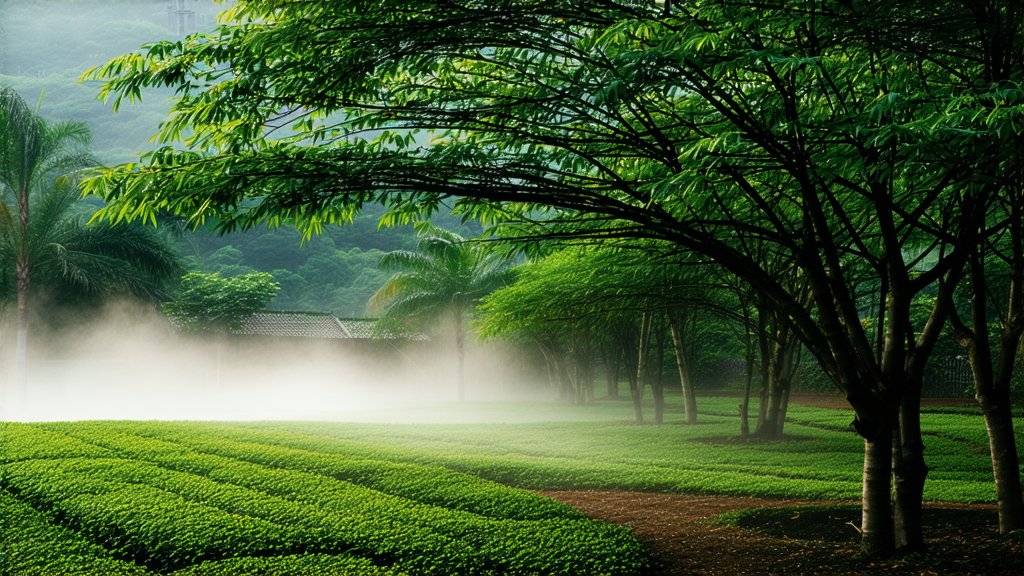
In the vast and diverse landscape of Chinese tea culture, Junshan Yinzhen stands as a golden secret, revered for its unique flavor profile and meticulous production process. As we embark on this exploration of one of China's most elusive tea varieties, let us delve into the history, types, manufacturing techniques, and the art of appreciating this exquisite brew.
A Glimpse into History
The origins of Junshan Yinzhen can be traced back to the Tang Dynasty (618-907 AD), where it was first cultivated in the lush hills of Junshan Island, located in Hunan Province. This small island, nestled amidst the expansive Dongting Lake, provided an ideal microclimate for tea cultivation, characterized by its cool temperatures, high humidity, and rich soil. Over centuries, Junshan Yinzhen has evolved from a local delicacy to a national treasure, with its production closely guarded by generations of tea masters.
Types of Junshan Yinzhen
Junshan Yinzhen is primarily categorized into two main types: Huang Ya (Yellow Sprouts) and Huang Xiao (Yellow Buds). Huang Ya consists of the tenderest sprouts picked before they fully unfurl, while Huang Xiao includes slightly more mature buds that have begun to open. Both types share a distinctive golden hue and a sweet, mellow flavor, with Huang Ya being the more prized due to its rarer availability and finer texture.
The Art of Crafting Junshan Yinzhen
The production of Junshan Yinzhen is a labor-intensive process that involves several stages, each requiring precision and expertise. It begins with the careful handpicking of only the finest sprouts and buds during the early spring months. These are then spread out to wilt under the sun, a process that reduces moisture content and initiates enzymatic reactions crucial for developing the tea's unique color and taste.
Next comes the fixation stage, where the tea leaves undergo a gentle steaming or pan-frying to halt oxidation and preserve their natural greenish-yellow color. This is followed by a unique step known as "sealing yellow," where the leaves are wrapped in cloth and left to ferment slowly at a controlled temperature and humidity. This slow oxidation process is what gives Junshan Yinzhen its signature yellow appearance and smooth, mellow flavor.
After fermentation, the tea undergoes drying through a combination of hot air and low-temperature baking, ensuring it retains just the right amount of moisture without compromising its delicate flavors. Finally, the dried tea is sorted and graded, with only the highest quality leaves making it into the final product.
Savoring the Symphony of Flavors
To truly appreciate Junshan Yinzhen, one must engage in the ritualistic practice of tea tasting, or "Cha Dao." Begin by selecting a transparent glass cup to observe the tea's graceful dance as it infuses. Use water heated to around 80°C (176°F) to avoid scalding the delicate leaves.
Add approximately 3 grams of tea per 150ml of water, allowing the leaves ample space to unfurl. As the tea steeps for about 2-3 minutes, observe its transformation from tight sprouts to a vibrant display of yellow hues. Take note of the subtle aroma that wafts up—a blend of sweet hay, fresh grass, and a hint of fruitiness.
Sip slowly, savoring the initial sweetness that coats your palate, followed by a lingering aftertaste reminiscent of distant mountain breezes. Pay attention to the tea's texture, which should be silky and smooth, with no bitterness or astringency. Each infusion reveals new layers of flavor, making Junshan Yinzhen a journey rather than just a beverage.
Conclusion
Junshan Yinzhen embodies the essence of Chinese tea culture—its history steeped in tradition, its production a testament to craftsmanship, and its consumption a meditative experience. As you explore this golden secret of allow yourself to be transported to the misty mountains of Junshan Island, where every cup tells a story thousands of years in the making. Embrace the art of tea, and let Junshan Yinzhen be your guide on this enchanting journey through time and taste.